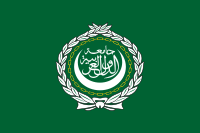Israel resumed Gaza ceasefire enforcement after airstrikes killed 44, following an attack that killed two Israeli soldiers. Hamas denied involvement but warned the truce could collapse. The U.S.-brokered ceasefire is under pressure, with Trump urging restraint amid rising tensions.
Israel announces return to ceasefire following air strikes in Gaza


The Israeli military announced it would resume enforcing the ceasefire in Gaza after conducting air strikes on Sunday, saying the strikes were a response to what it described as Hamas’s “blatant violation” of the agreement. According to the IDF, strikes began in southern Gaza after “terrorists fired an anti-tank missile and gunfire” at Israeli forces operating in Rafah, an exchange that it said resulted in the deaths of two soldiers.
Hamas, however, stated it was “unaware” of any clashes in the sector under Israeli control. By evening, Israel reported it had struck targets across the Gaza Strip; hospital sources later told reporters that 44 people had been killed in the day’s exchanges. While Hamas reiterated its commitment to the ceasefire, it accused Israel of committing violations and warned that continued strikes could “push the situation toward a total collapse.”
Shortly after 21:00 local time the Israel Defense Forces said they had “begun renewed enforcement of the ceasefire,” adding they would uphold the agreement while also “respond[ing] firmly to any violation of it.” The IDF statement did not explicitly clarify whether an earlier decision to suspend aid deliveries into Gaza had been rescinded.
Arriving in Washington DC on Sunday, US President Donald Trump told reporters the ceasefire remained in effect. He said Hamas had been “rambunctious and they’ve been doing some shooting,” suggesting some of the firing could have come from “some rebels within” the movement. “Either way it’s gonna be handled properly. Toughly but properly,” he said.
The first phase of the US-brokered ceasefire, which came into force on 10 October, halted active hostilities immediately, prompted a partial Israeli pullback to a so-called yellow line around the north, east and south of Gaza, and allowed more humanitarian aid into the territory. As part of that arrangement, Hamas has released all surviving hostages and returned the remains of 12 of the 28 deceased. Israel, in turn, freed 250 Palestinian prisoners and released 1,718 detainees from Gaza, while returning 15 bodies of Palestinians for each Israeli whose remains were handed back.
Sunday’s events tested that deal. Gaza endured its deadliest day since President Trump convened world leaders in Egypt last week under the banner “Peace in the Middle East.” Washington has signaled it will push to keep the ceasefire intact; to that end, Steve Witkoff, a Trump envoy, and Jared Kushner, the president’s son-in-law, are scheduled to travel to Israel shortly.
Earlier on Sunday the Israeli military described the initial exchange in Rafah, saying “terrorists fired an anti-tank missile and gunfire toward IDF troops operating to dismantle terrorist infrastructure in the Rafah area, in southern Gaza.” The IDF said it struck the area “to eliminate the threat and dismantle tunnel shafts and military structures used for terrorist activity.”
Hamas’s armed wing denied having any knowledge of clashes in that part of Rafah. In a statement, the al-Qassam Brigades said their communication with remaining units in the area “has been cut off since the resumption of war in March of this year,” adding that they had “no connection to any events taking place in those areas” and could not communicate with fighters there “if any of them are still alive.”
Prime Minister Benjamin Netanyahu’s office named the two soldiers killed in the Rafah incident as Major Yaniv Kola and Sergeant Itay Yavetz. It said Netanyahu had convened senior defence officials and instructed them “to act forcefully against terrorist targets in the Gaza Strip.”
Residents south of the nearby European Hospital reported that the strikes were accompanied by artillery shelling and that powerful explosions shook parts of Rafah. People in eastern Khan Younis described at least 12 air strikes there, calling the area a “fire belt.” The attacks produced columns of smoke above the city and provoked panic among displaced families sheltering nearby.
In central Gaza, medical staff at al-Aqsa Hospital said nine bodies arrived after two separate strikes hit a small seaside café inside a tent in al-Zawaida and a building in Nuseirat. BBC eyewitnesses described massive fireballs rippling along the coast and secondary explosions as ambulances and rescuers rushed to the scenes. Local sources said six of those killed in the al-Zawaida strike were members of the al-Qassam Brigades, including Yahya al-Mabhouh, the commander of Hamas’s elite unit in the Jabalia Battalion — a loss described as one of the group’s most significant since the ceasefire began.
Separately, a doctor at Al-Awda Hospital in Nuseirat reported that four bodies were brought in after an Israeli air strike hit a school that had been sheltering displaced families; casualties included several women and children, the doctor said.
Under the 20-point ceasefire deal brokered by Trump, Hamas is expected to relinquish weapons so that it no longer poses a threat to Israel. Hamas has accused Israel of enabling and arming a criminal looting gang alleged to be operating with impunity in the Israeli-controlled half of Gaza. The movement, which has governed the territory for 18 years, faces challenges from other armed groups such as Abu Shabab’s Popular Forces — groups Hamas says are being armed and supported by Israel.
A local source familiar with the Sunday morning incident told the BBC that Hamas fighters had attacked a group affiliated with Abu Shabab in south-eastern Rafah, an area under Israeli control. The source said the militants came under surprise tank fire, which led to a brief exchange of gunfire before Israeli aircraft bombed the location. An Israeli military official later said there had been “at least three incidents in which Hamas fired towards our troops standing behind the yellow line,” and asserted the attacks were “not connected to any type of internal fighting.”
IDF forces continue to occupy and control slightly more than half of Gaza. The strikes in Rafah followed US claims it had “credible reports” that Hamas planned an “imminent” attack on civilians in Gaza — a move Washington said would represent a “direct and grave” breach of the ceasefire. The State Department warned a planned assault on Palestinians would “undermine the significant progress achieved through mediation efforts.” Hamas strongly denied any intention to carry out such an attack.
A week earlier, fierce clashes between Hamas security forces and armed members of the Dughmush family in Gaza City left 27 people dead. President Trump has publicly warned Hamas against killing civilians, writing on Truth Social that “If Hamas continues to kill people in Gaza, which was not the Deal, we will have no choice but to go in and kill them,” though he later clarified he would not be sending US troops into Gaza.
The Israeli military began its campaign in Gaza following the 7 October 2023 attack in which Hamas-affiliated gunmen killed around 1,200 people in southern Israel and took 251 hostages. Since then, the Hamas-run health ministry reports that at least 68,000 people in Gaza have been killed by Israeli strikes — figures the United Nations regards as reliable.

 বাংলা
বাংলা  Spanish
Spanish  Arabic
Arabic  French
French  Chinese
Chinese 
